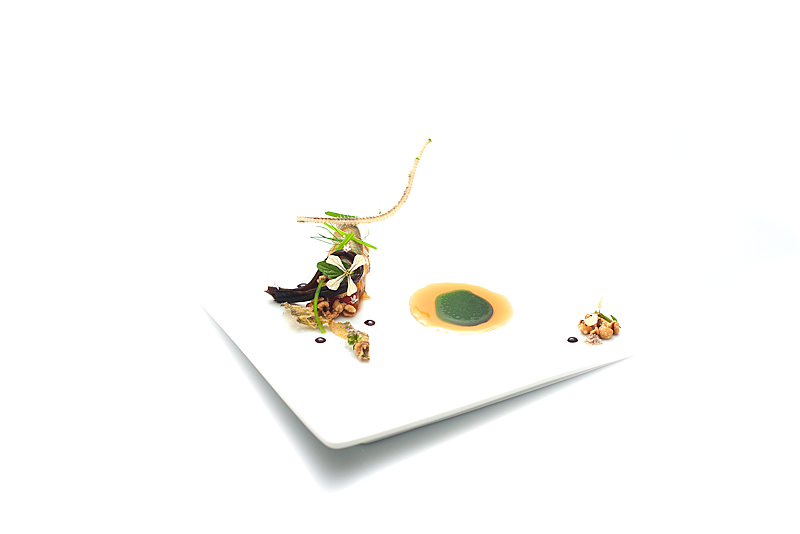
The “ayu“, or sweetfish, is a small Japanese relative to the smelt family. A freshwater fish with a very short (one year) lifespan, the ayu’s flesh has the peculiar characteristic of smelling delicately (and incredibly) like watermelon. So…why not pair the two?
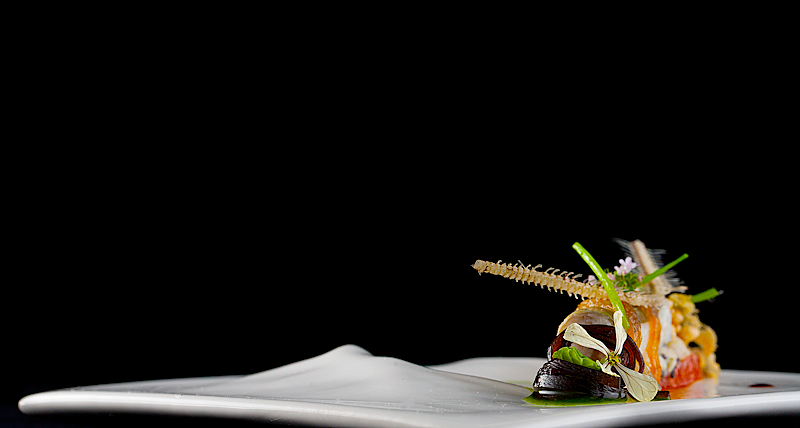
I’ve spent a couple years searching off and on for ayu at the various asian markets I’ve visited in the area. I feel like every time I say “this ingredient is really hard to find”, an Asian coworker points out how they used to eat so-and-so ingredient all the time as a kid in LA, or that they could swear they saw it just the other day at the Korean market just up the street. Either I suck at shopping at these places, or these fish are legitimately tricky to find in the Bay Area.
I emailed Eric Rivera at Alinea a year and a half ago or so, asking for help sourcing Ayu. He pointed me to True World Foods, a restaurant seafood wholesaler that Alinea apparently uses from time to time. I emailed True World last year, explained that I wasn’t a restaurant but just a dude who wanted some fish, and asked if they could source some Ayu for me. A few days later I got an email back from them telling me that they could sell me a tray of Ayu, but that I’d need to come pick it up from them directly.

At the time, I got distracted by some other dishes, but I earmarked the email for future reference…the future, of course, being now.
About two weeks ago, I emailed True World again, asking if they could still source it. A representative named Carl emailed saying they could, and that I had two choices: they could get me either wild or farmed Ayu (the farmed being cheaper). Eric told me if I had the choice, I should choose wild (ostensibly because the flavor would be better), so I expressed as much to Carl, and asked him from where they’d be bringing these in. I presumed the fish would be shipped from a domestic location, but Carl said no, they’d be coming straight from the Tsukiji Fish Market in Tokyo, and would be overnighted in.
This struck me as pretty badass.
True World has an office in San Leandro, about 20 minutes’ drive south of Oakland. I arranged for a Friday morning pickup from Carl, and drove down early before work on the day to pick up a tray of 11 fresh Ayu straight from Japan. The offices are in a fairly scrappy neighborhood, and are laden with barred windows…the area around the building was desolate. This is probably par for the course if one works in the hospitality industry as a professional, but for me it was a new experience…this isn’t Whole Foods.

The dispatch office was behind the main building, a tiny room laden with security camera monitors and manned by a guy named Mr. Osaka. Mr. Osaka needed some involved explanations from me as to who I was and why I was there; I told him I had been working with Carl and was here to pick up some Ayu. He made a phone call, seemed satisfied, and told me to wait for Carl to come meet me. After a pause, he eyed me and said “Ayu. Why you want this fish?” I told him I was trying to learn about it, and needed it for a dish I wanted to make. “Ayu very special fish. My favorite fish. Is Japanese…has…nice taste. Unusual taste.” Everyone at Alinea can rest easy knowing Mr. Osaka approves of their choice of fish for this dish, mmkay?

A few minutes later, Carl appeared and greeted me with a folder of information. “You’re not from a restaurant, then?” he asked (this was about the 10th time I’d been asked this). I answered in the negative, and he said “Cool, you’re just doing this for fun then?” I liked this approximation of things, so I said yes.
“Awesome. here, check this out”. He showed me an extensive list of everything True World was stocking for the day, as well as what they expected to get tomorrow. There was a large book detailing many of the wares from Tsukiji, though he noted that there were no prices because they change too rapidly. “There’s also another fish market we work with, it’s further south. It’s quite a bit cheaper, but there’s a small selection. Tsukiji is more expensive, but they have everything. So, don’t pay much attention to what all’s listed in these books, if there’s something you need, call me and I’ll get it. There’s way more out there at these markets than I can fit in this book.” I really loved that he was so excited to show me all of this.
After a bit more chatting, he ducked into a backroom and returned with my receipt and a tray of fresh Ayu.

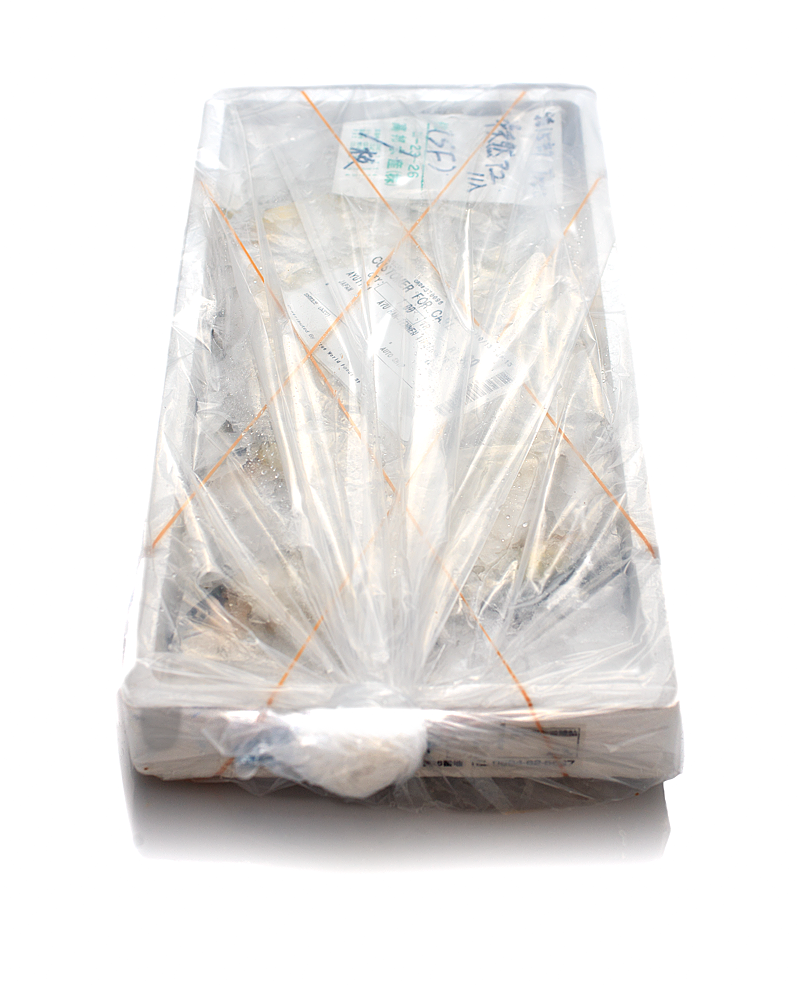
Guys, I was pretty freaking excited about this. I took them straight home to store in the fridge until I was ready to work with them. When I unpacked them later, the ice bed they had been gently laying on was still frozen (and I noticed the styrofoam tray had small drain holes in it, with cold gel packs underneath it to help keep things cold and keep them from sitting in water as the ice melted. Cool).
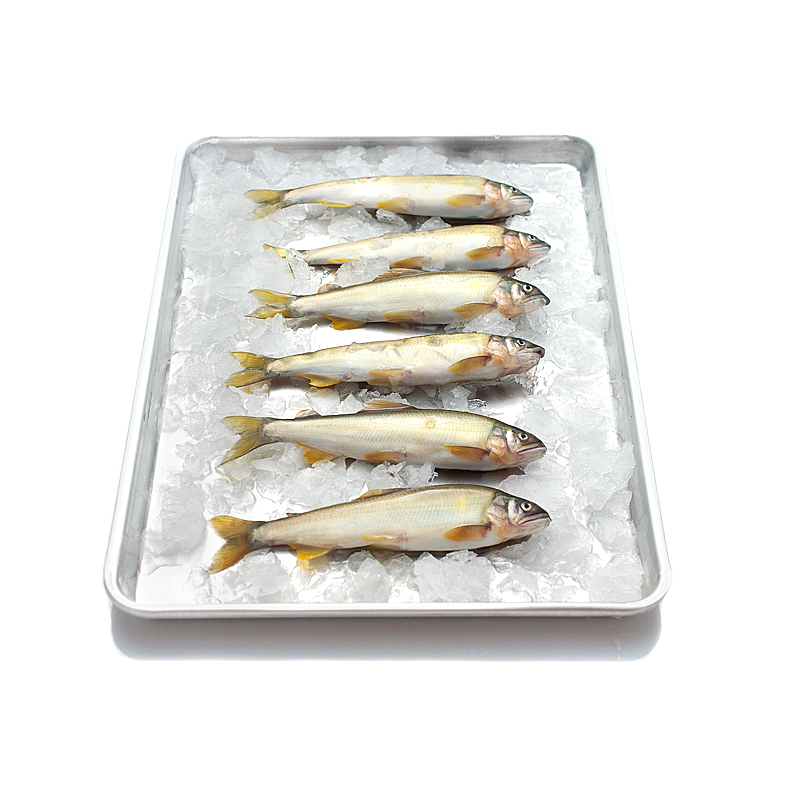
The Ayu were small, around 8″ in length, and still covered in the protective mucus most fish secrete (this is why they’re slippery fresh out of water). Their eyes were bright and clear…these things were seriously beautiful.
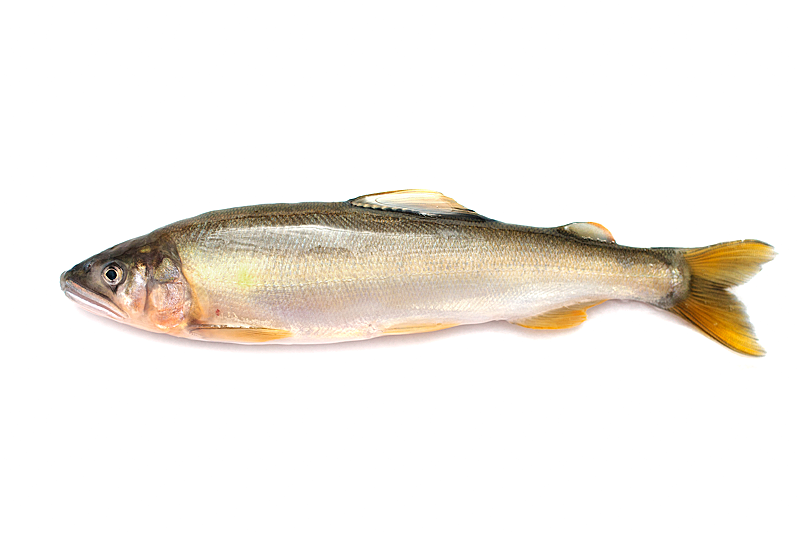
My awe at looking at these things after so very much time and consideration expended getting them was immediately followed by anxiety; I had to butcher these things entirely, which is not something I’ve ever done before. The Alinea book offers some detail on how to do this, but it’s not comprehensive and takes some steps for granted (eviscerating the fish being the most notable one). I didn’t get any photos of this process because, well, it was nerve-wracking, I made a slight mess of it, and I wasn’t super-happy about the process.
To eviscerate the fish, I made an incision from the bottom of the fish’s jaw down to what I assume is it’s butthole…a small hole about 3/4 of the way down the fish. I gently pried open this incision and used my finger to scoop out the stomach and entrails, which is a smooshy mess that takes a bit of mettle if you haven’t done this before. Why does one eviscerate the fish before filleting it? I learned the hard way, so let me tell you! Filleting the fish means removing the side loins from the fish; if you don’t get rid of the guts first, you cut right through all of them as you remove each fillet, which is messy as hell and can cause contamination problems easily. Plus it’s hella gross.
The flesh indeed smelled fascinatingly sweet and reminiscent of watermelon; it was also almost exactly as delicate as watermelon flesh. For half of the fillets, I was meant to cut the skin off…a process that’s slippery and requires the very, very sharpest of knives if you don’t want to have an experience like I did and make a mess out of things. The flesh crushes easily, so one has to be very careful not to totally destroy the meat in skinning it.
After separating the fillets, I stacked them two at a time with some salt between them, and rolled them in plastic wrap into little ayu torpedos. These were steamed for a few minutes just before plating, then unrolled and trimmed at the ends. The salt helps bind the two fillets together.
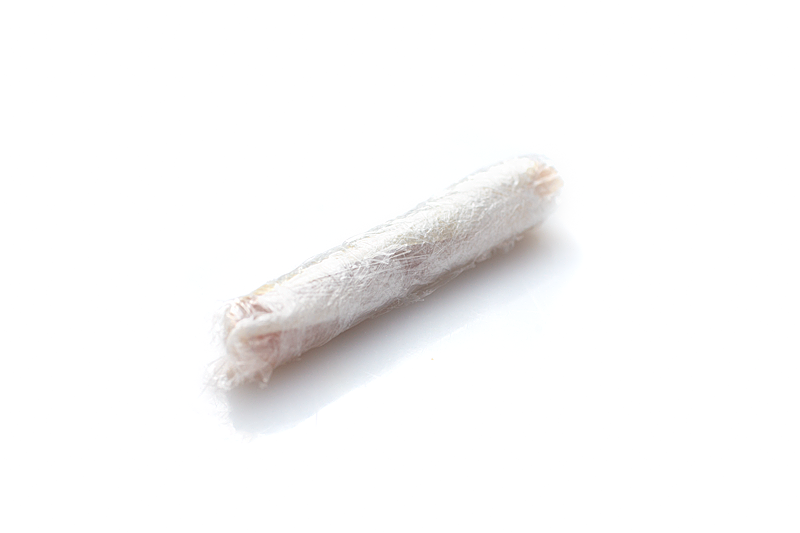
From the remaining fish carcasses, I removed the heads and tails, and boiled the spines to loosen and remove all meat. At this moment, my neighbor Asalle (who is also a coworker) was out walking her dog, saw me through our kitchen window, and called to say hi and ask what I was doing. Trying to chitchat casually while picking meat from fish spines with the ultimate intent to eat them…this is my life right now.
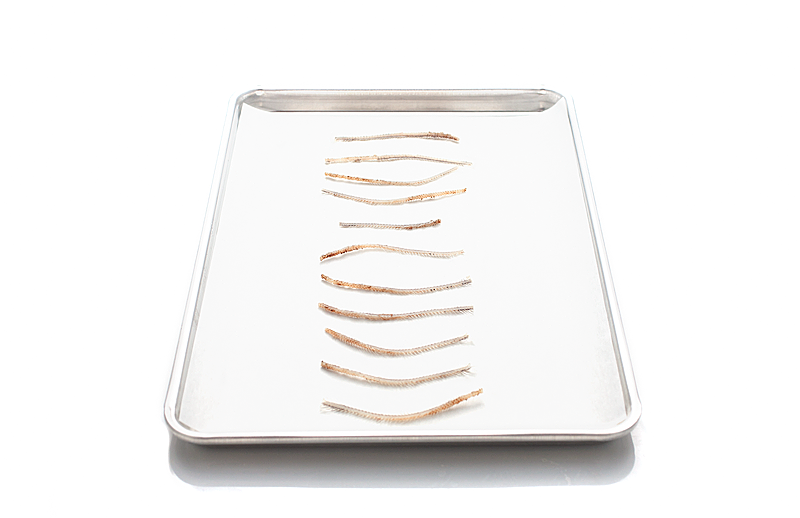
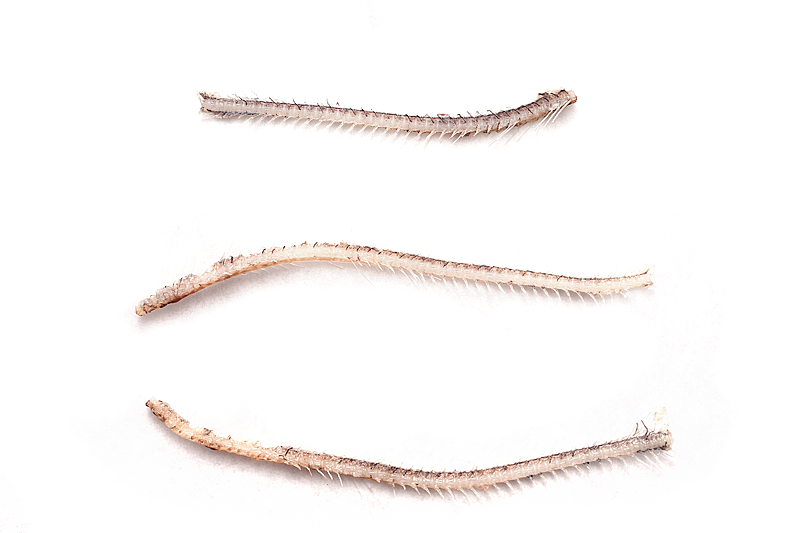
It was getting late into the night at this point, and I had the finale of The Office to watch, so I put the spines and the removed ayu skins in separate containers of lightly-salted water to store in the fridge overnight.
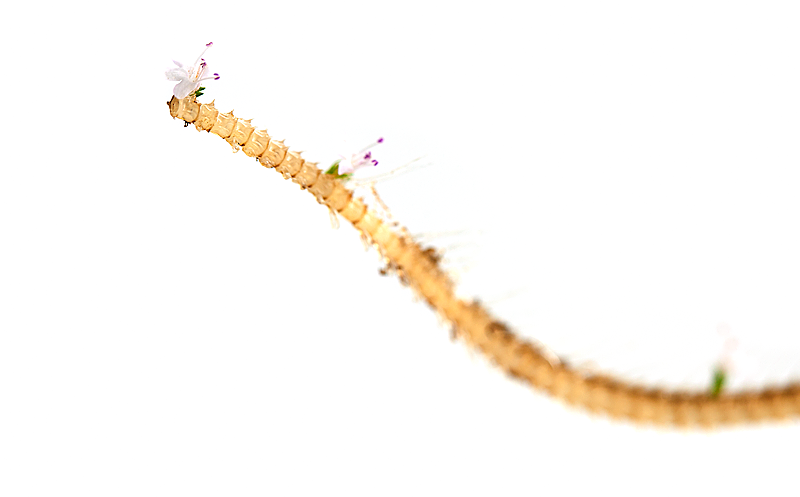
The next morning, I started working with some Hato Mugi. Hato Mugi, I learned, is a large Asian grain most-often prepared as a warm cereal. It has a nutty flavor and — when cooked — a texture reminiscent of hominy.
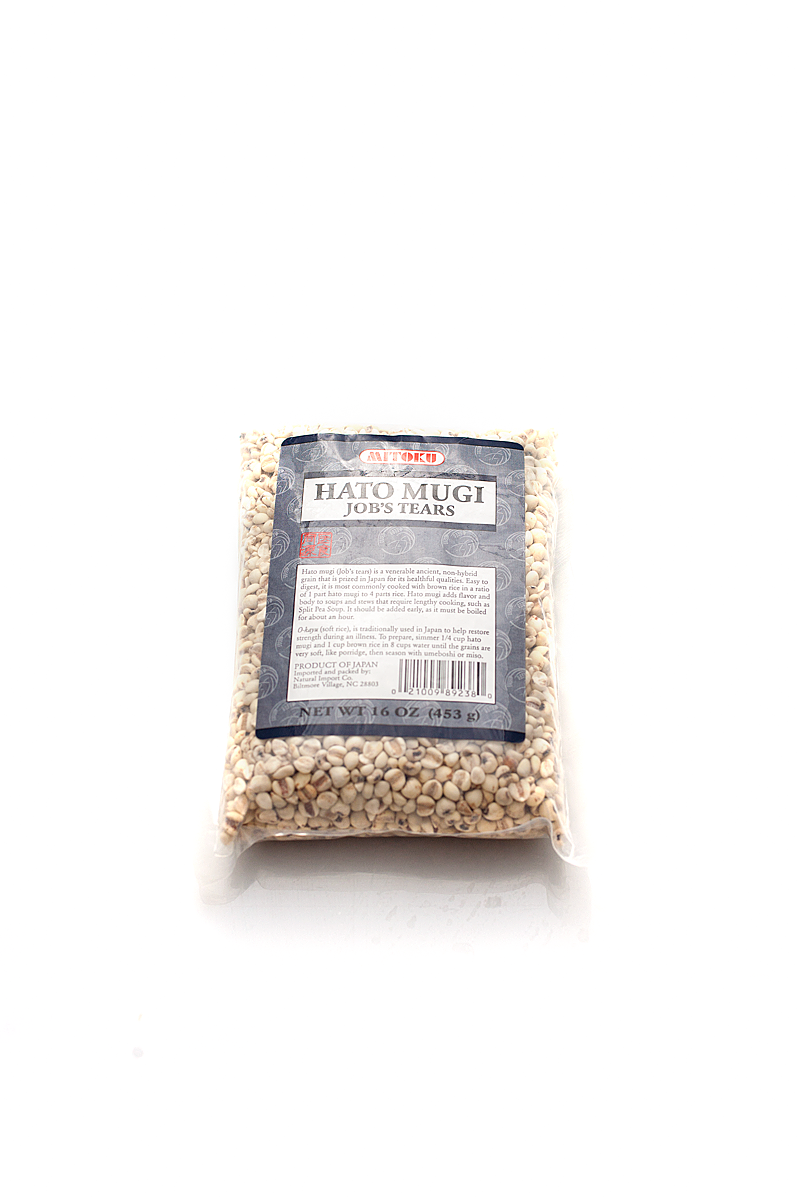
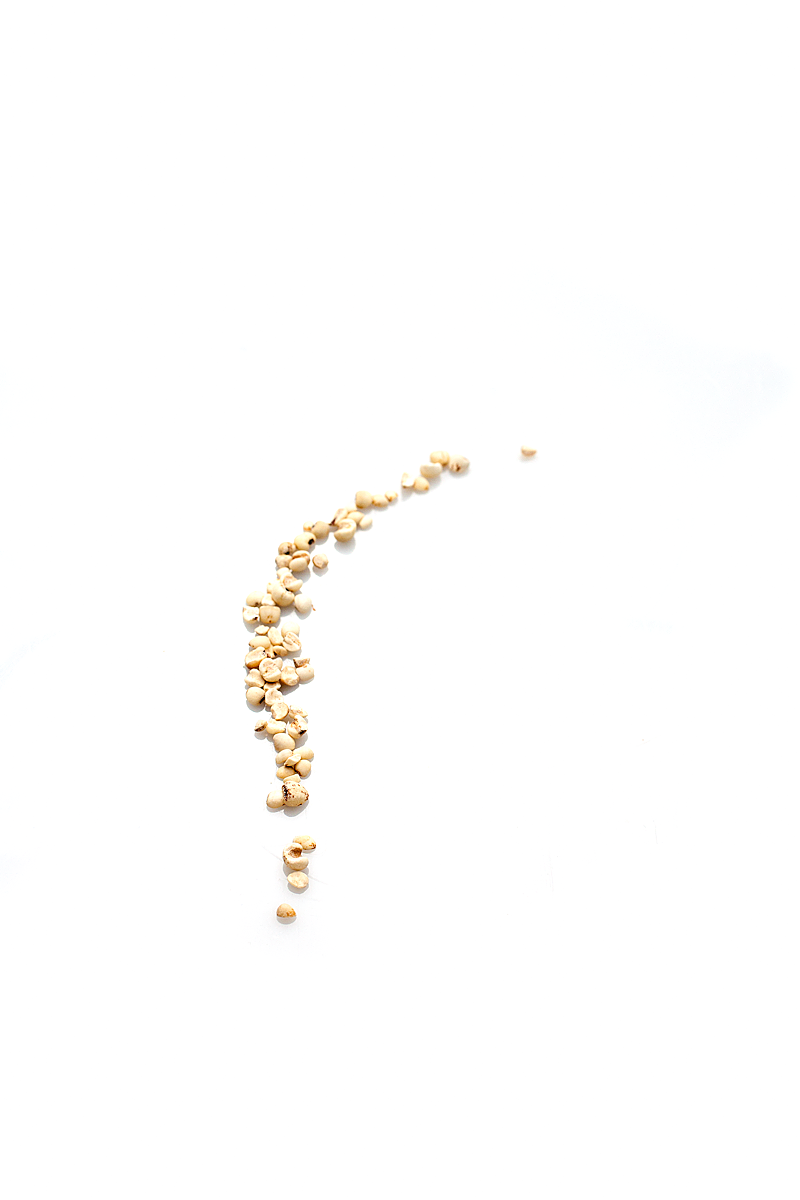
To prepare it, I simmered about a half-cupful in water, along with a sachet of lemongrass, ginger, and red Thai chili. I was impressed at this trick; the cooked grains’ nutty flavor went really nicely with the subtle freshness offered by the infusing ingredients.
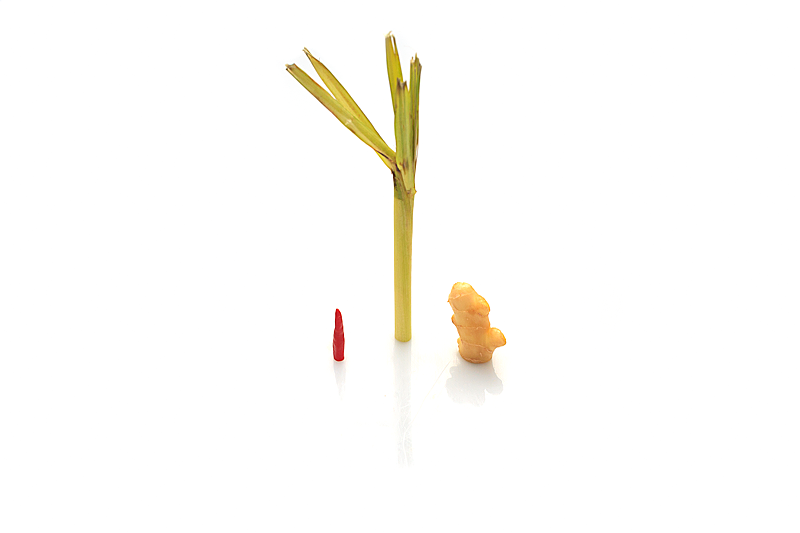
When the grains were tender, I drained them, then partially-dehydrated several spoonfuls. The semi-dry grains then were cooked in hot oil until they puffed.
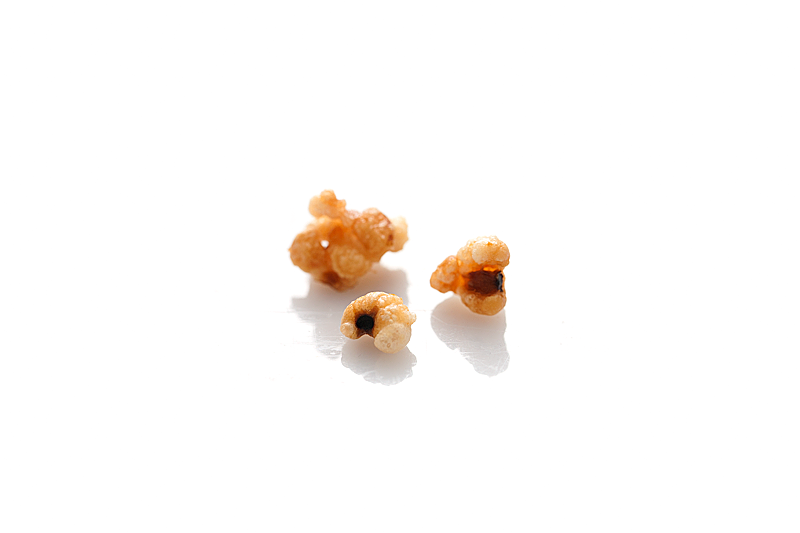

While the hato mugi was drying, I toasted some coriander seeds, then crushed these to a powder and combined them with some sea salt.
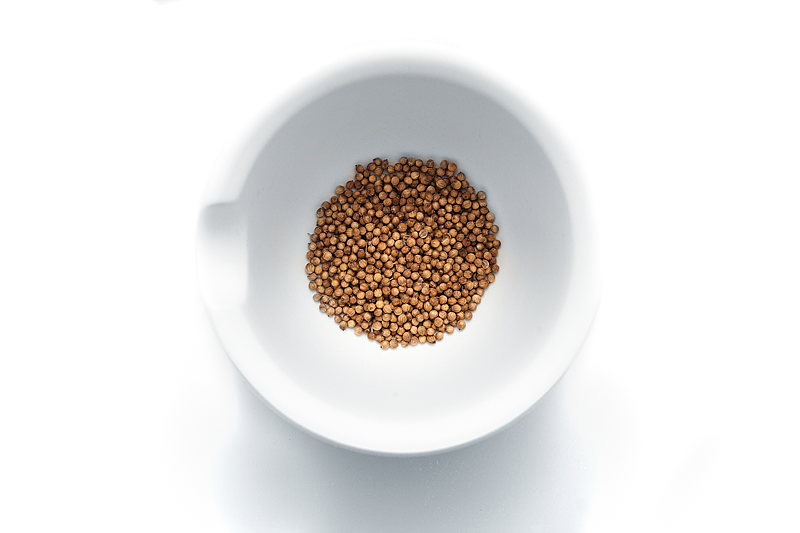
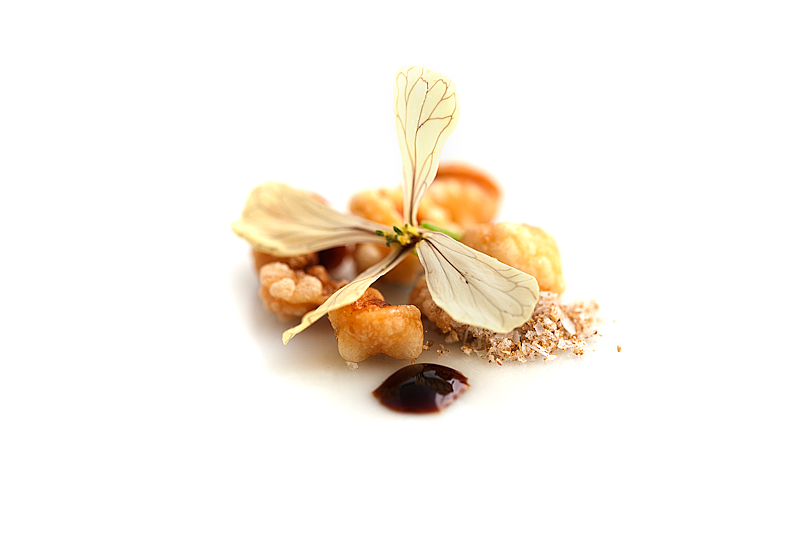
I also pressure-cooked some white and black sesame seeds in separate batches for about a half hour until they plumped. This was neat; they take on a popping texture sort of like tobiko

Some of these seeds were steeped overnight in milk to infuse the milk with sesame flavor; the milk was cooked with agar and sesame oil to form a gel, then pureed into a creamy, mayonnaise-like consistency to yield Sesame Pudding. I combined the cooked hato mugi with some plumped black and white sesame seeds, the sesame pudding, and lime juice and zest to yield a fresh, light-tasting salad of sorts.
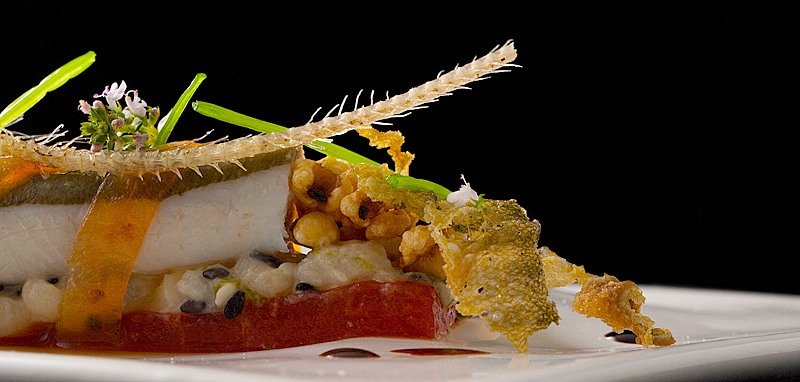
The sweetness of the Ayu is paired with watermelon, which is meant to be compressed with soy sauce. “Compressing” watermelon is something meant to be accomplished with a vacuum chamber, but I have a super-duper-duper shitty Foodsaver (and will never bypass an opportunity to speak loudly and obnoxiously about how shitty, how very very super shitty this thing is), which cannot form a strong enough vacuum to do the compression.
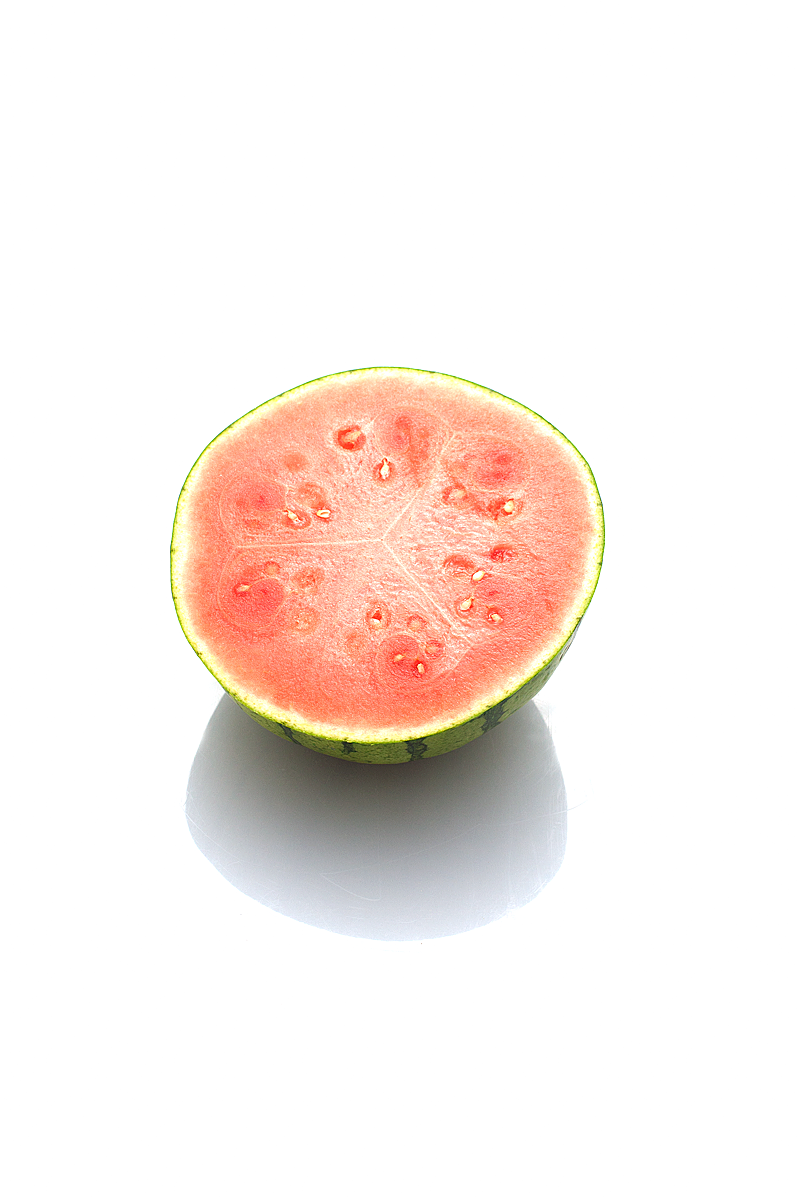
Thankfully, there’s an interesting alternative; freezing vacuum-sealed watermelon causes similar cell rupturing as compression techniques, ultimately yielding watermelon that has a meaty, thickened texture not unlike a piece of sashimi-grade tuna. So, I cut my seedless watermelon into planks 3″x1″x0.5″, sealed them with some soy sauce, and froze them overnight. After letting them thaw the next day, I found they did indeed take on a lovely meaty texture, though the soy flavor was pretty pronounced. I think if I were to do this again, I’d freeze them sans soy sauce first, them let them steep in the soy sauce for a bit of time before plating, to get more of the sweet watermelony taste pulled up front.
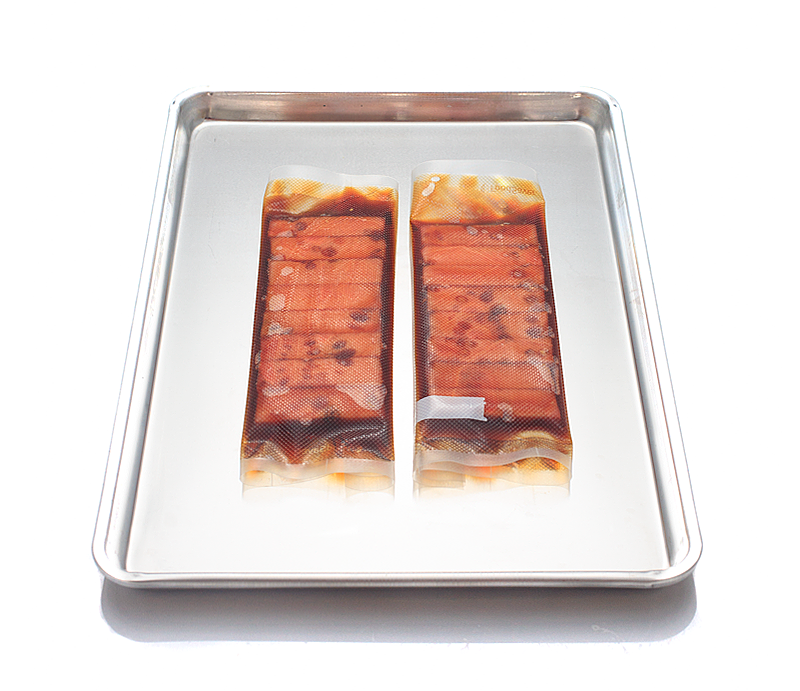
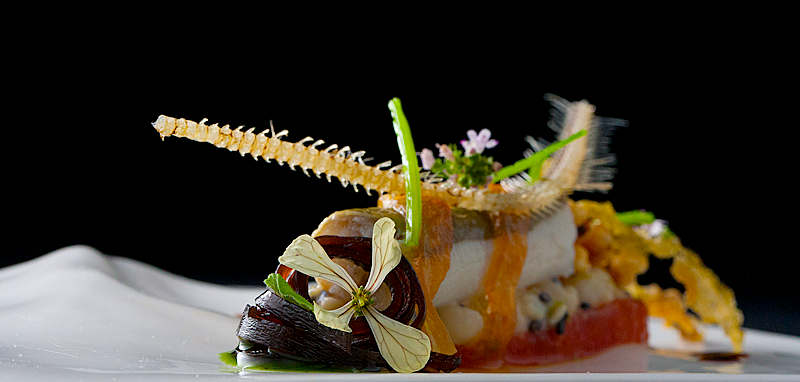
I also made Pickled Watermelon Rind from the cuttings left over from the watermelon. I sliced the rind into tidy planks…
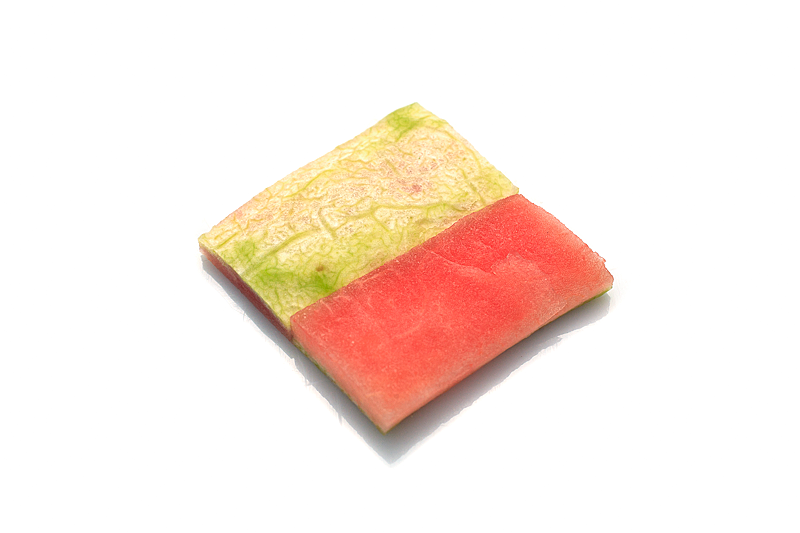
…then cooked them in a mixture of rice vinegar, sugar, and water until they turned translucent. The planks were slived into thin ribbons just before plating.
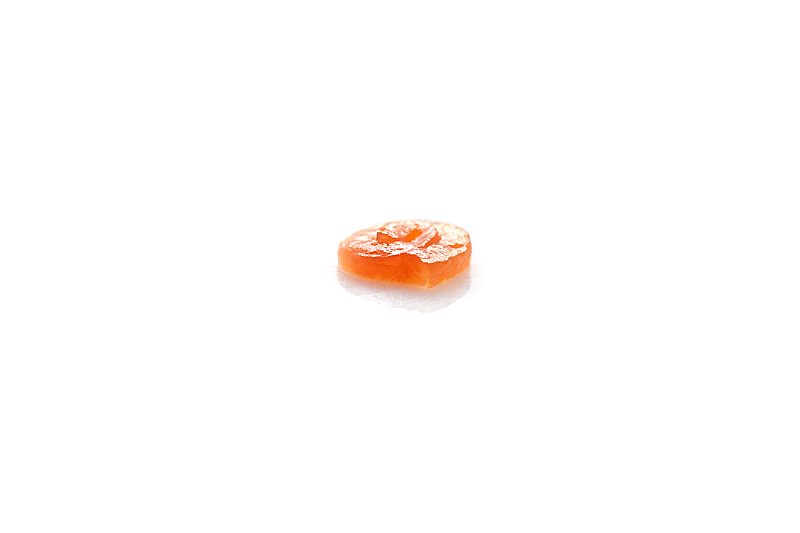
To make brilliant green Cilantro Sauce, I started with a bunch of cilantro…
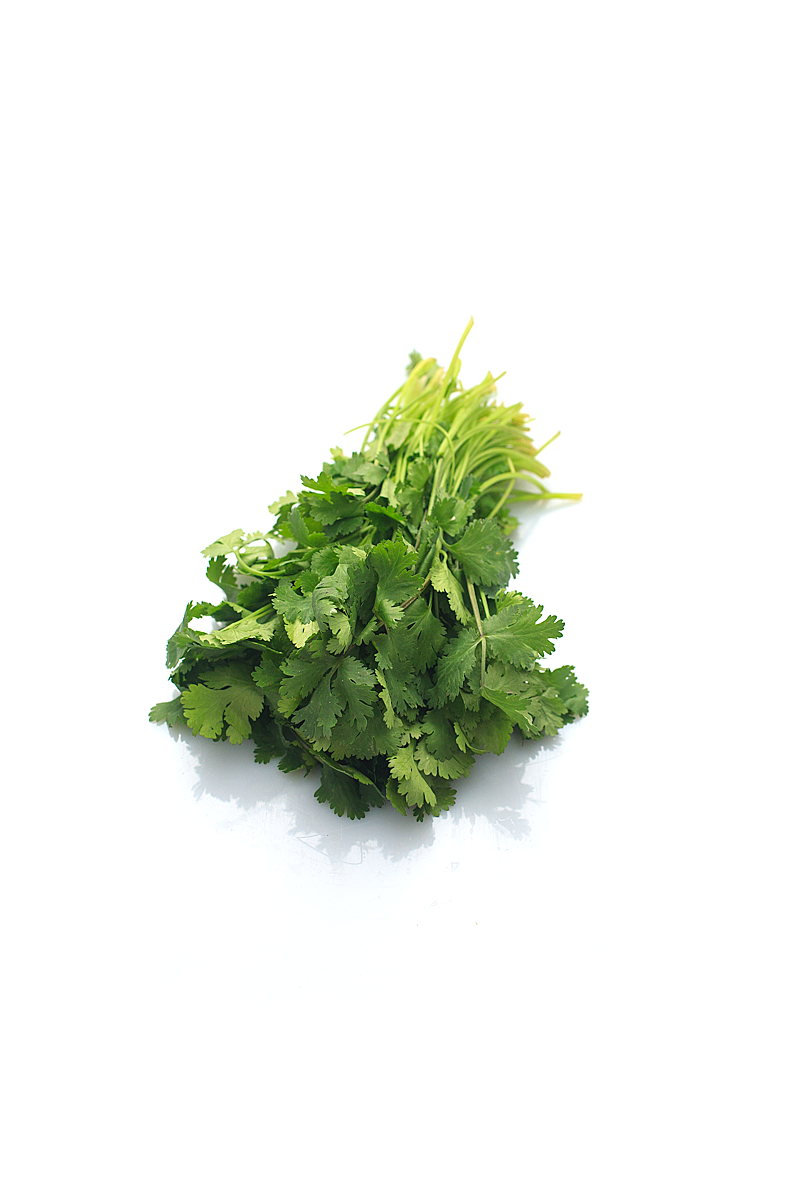
…and picked all the leaves from the stems.
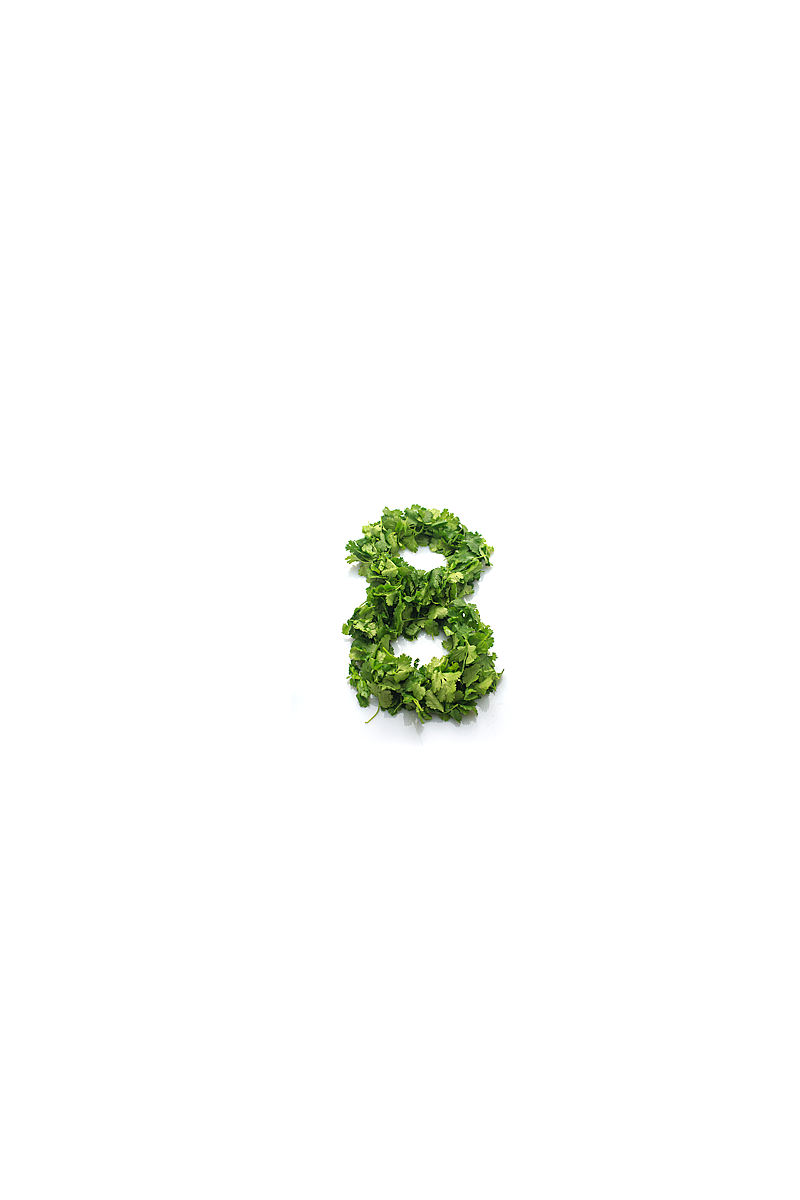
The leaves were blanched briefly in salted water, then pureed with ice water, simple syrup, and ultra-tex 3 in a blender to yield a syrupy sauce.
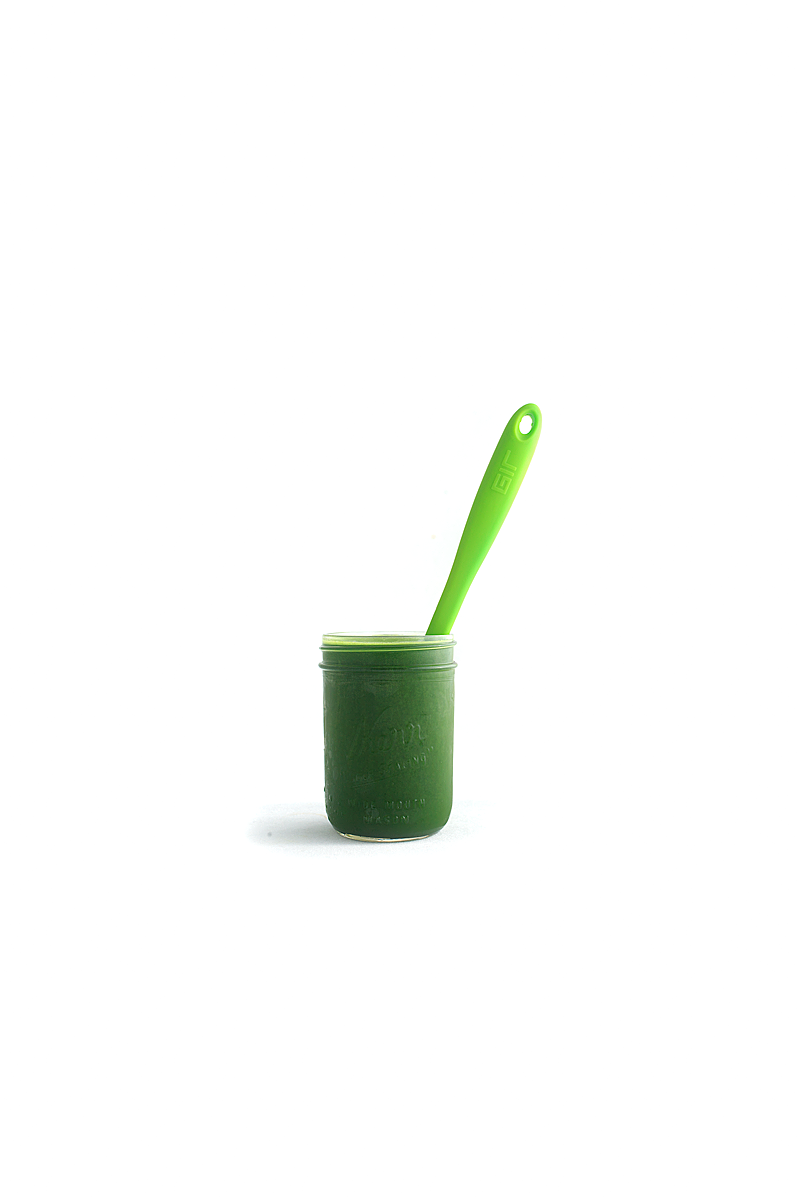
I had reserved the cilantro stems, which I cut into small spears, then candied briefly in simple syrup.
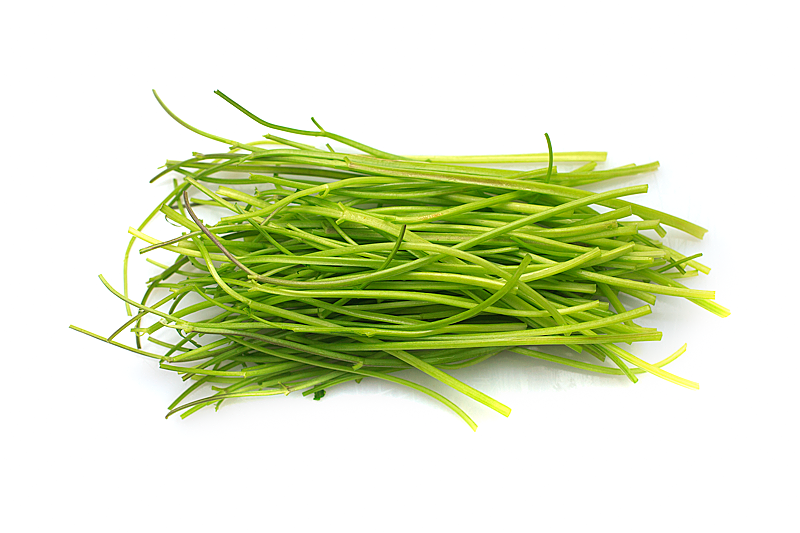
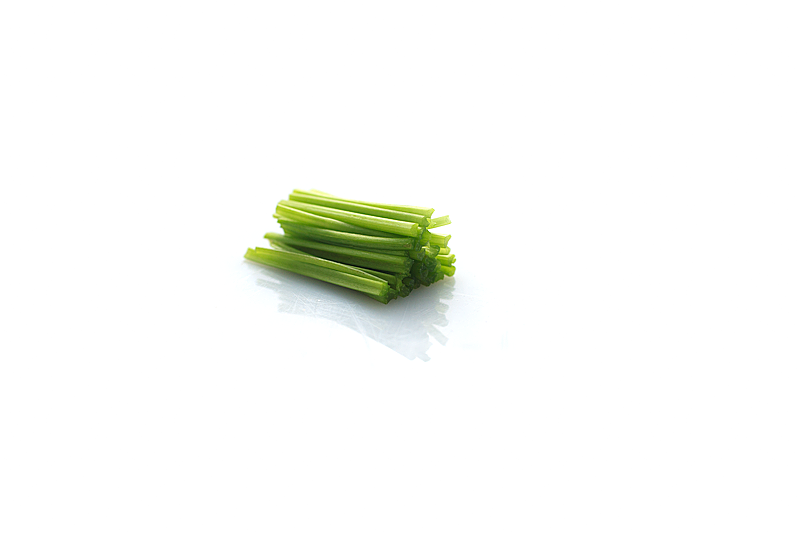
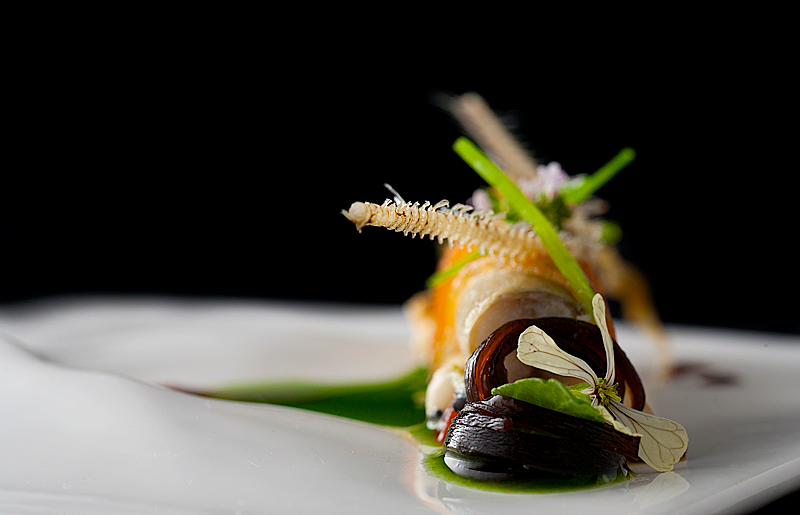
Next I worked on Braised Kombu. I started by making a homemade teriyaki sauce: I caramelized some sugar, in which I then cooked some shallot, ginger, lemongrass, and carrot. I added soy sauce, sake, and water, and left this to steep and infuse. This mixture was then transferred to a baking dish with some fresh Kombu.

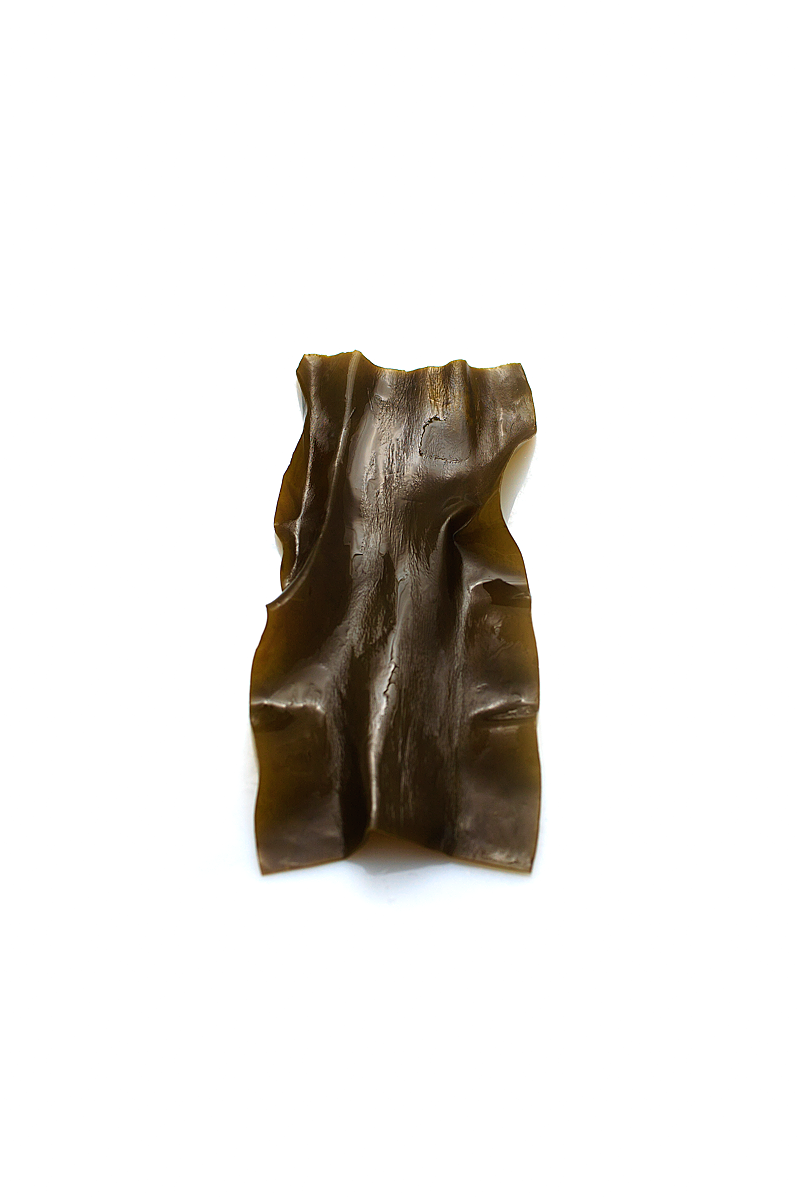
The Kombu was braised for several hours, until it took on the texture of al dente pasta. I cut it into ‘noodles’.
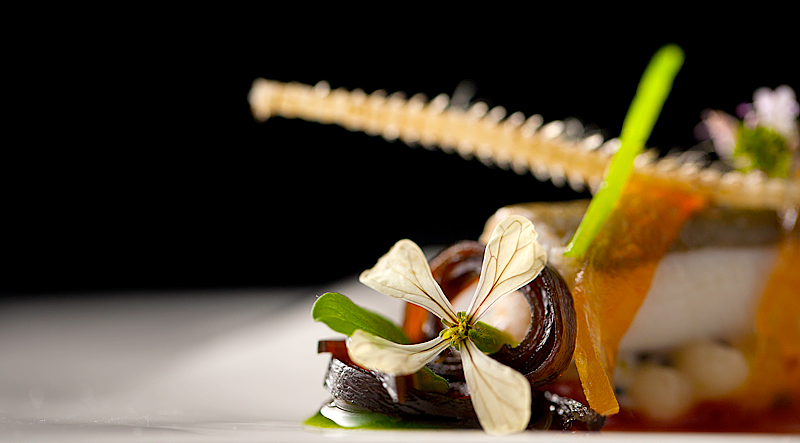
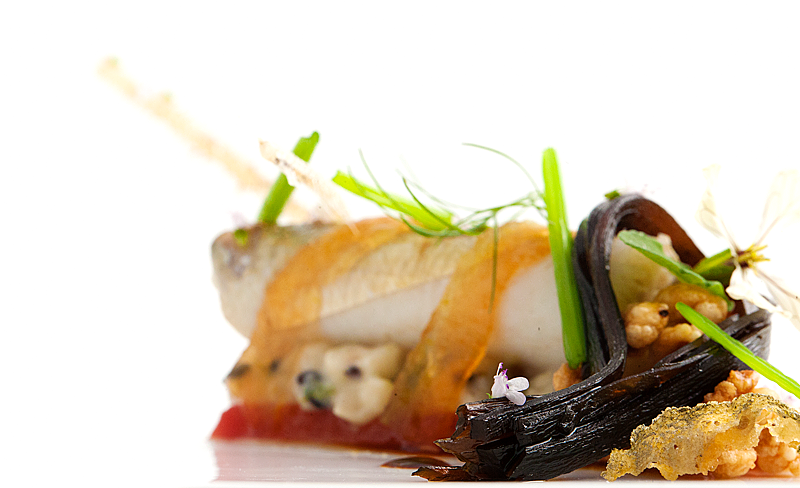
The remaining liquid was cooked down into a thick Kombu Syrup.
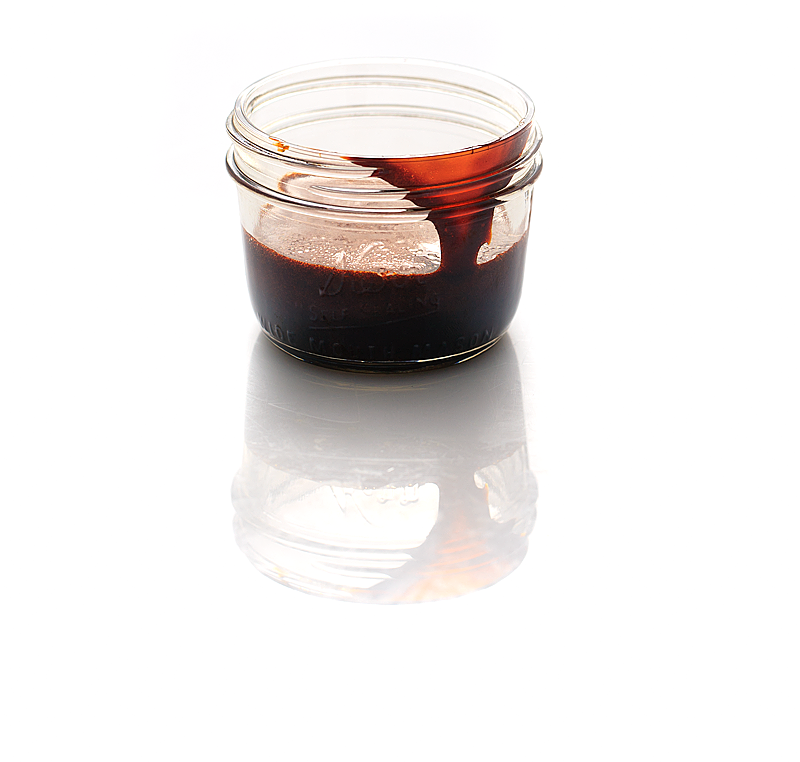
Finally…The Frying Of The Stuff. I heated more oil, and fried the reserved spines and fish skins. The fish skin thing I was used to…this is a favorite thing of mine, and it yields potato-chip crispy skin flakes that taste very lightly fishy and delicious.
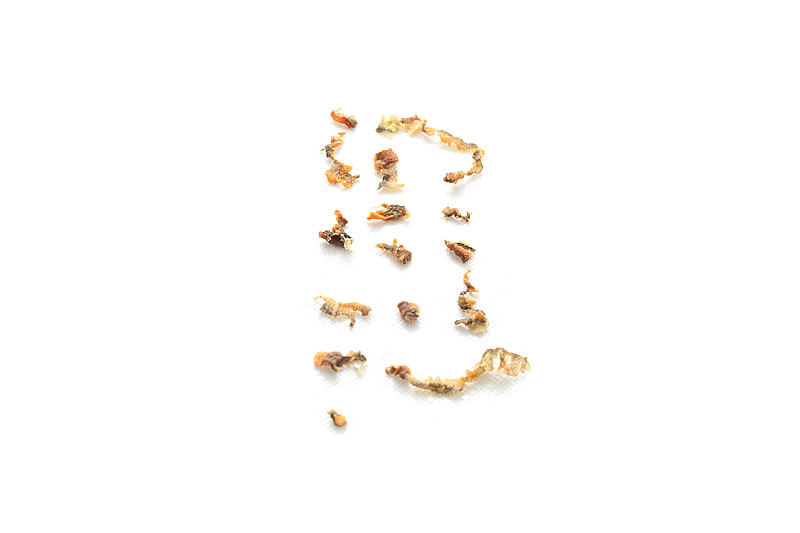
But I’d never fried a spine before.
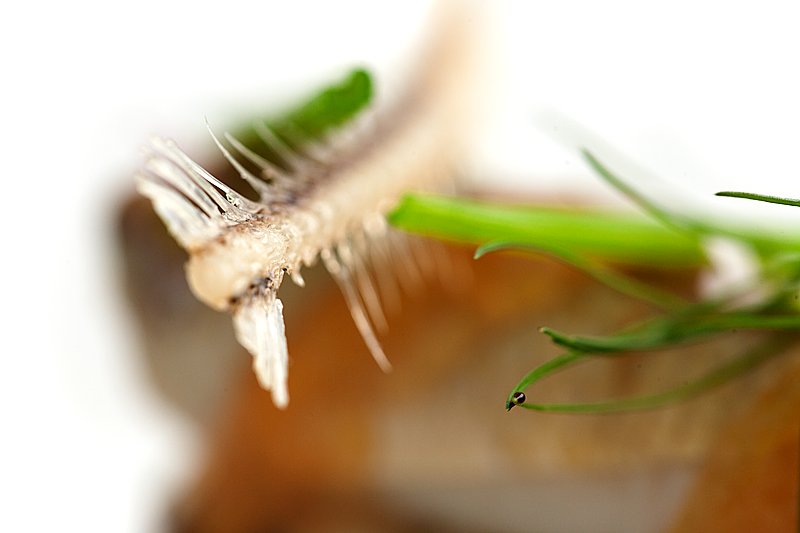
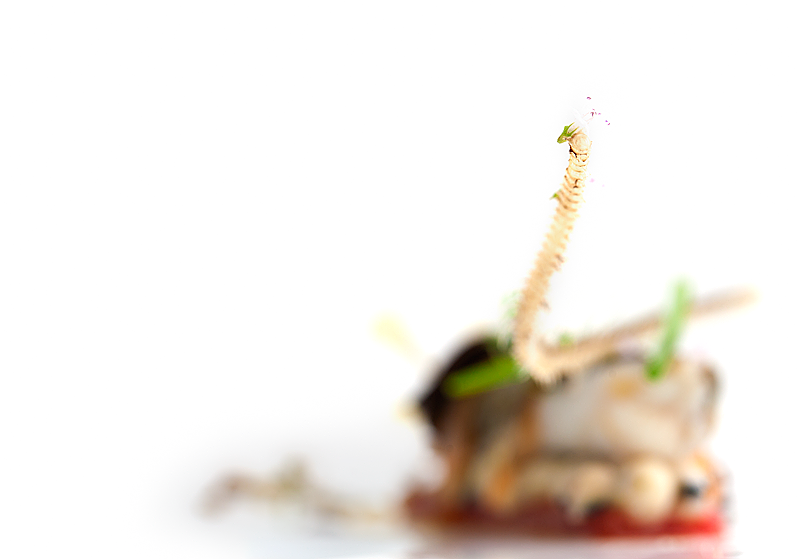
I plated everything, first on a Montgatina plate, then I tried it on my Tessendorf plate. The former worked well, the latter was pretty rough. But either way, this dish tasted delicious. The fish and watermelon not only taste delicious together, but the texture is kind of a fun flip-flop of what’s expected: the fish itself is so tender it almost falls apart in the mouth, whereas the compressed watermelon offers more tooth. The fishy textures are beautifully accessorized by the crispy spine, the skin, and the puffed hato mugi. These flavors all all Thai-like, very light and refreshing. Sarah and I both agreed this is one of the most outstanding dishes of late…visually-striking and totally delicious.
nice platting, it makes the dish even more delicious. XOXO
This dish looks so bad-ass, probably because of that fish spine! Very, very cool, all of it (especially a watermelon-scented fish!).
I’m curious about the kombu syrup. What was that like? An incredibly concentrated dashi?
Ha, yeah the spines were so nuts. They looked terrifyingly dangerous to eat, but turned out to just be super-brittle and crispy and yummy.
The kombu syrup was…good? I’ve found long cooking of soy sauce (and reducing it, which is something I’ve done a couple time for the book) tends to give it a slight burnt/carbony/bitter note. Used in a couple dots as it was in this dish, it tastes nice, sort of like teriyaki syrup (the ‘kombu’ note sort of serves as more a foundation/umami-type flavor rather than something you could easily pick out and say “HEY THIS IS TOTALLY SEAWEED”). But if you taste, say, the back of the spoon you just dipped in to see if it’s reduced enough, it might make you cough from being so overpowering. Unless I just totally did something wrong, which I definitely could have. It was just very soy-y. I think if I were to try to hone that particular element, I might halve the soy amount, to let the lemongrass and kombu flavors brighten up things a bit more. To me, Dashi has more of that bonito, fishy-type flavor, which is absent here.